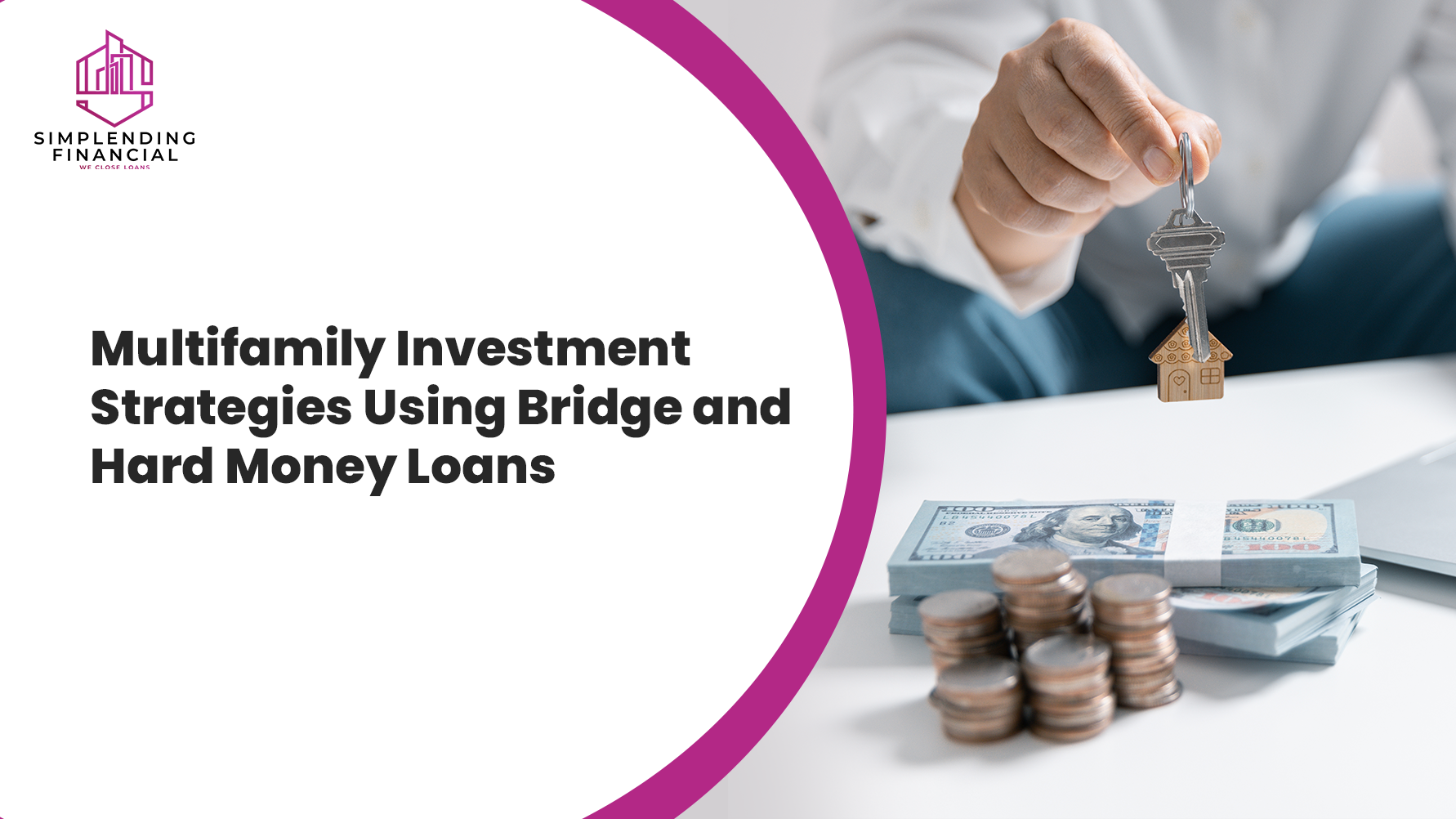Multifamily Investment Strategies Using Bridge and Hard Money Loans
Investors that aim to build long-term wealth and maintain regular cash flow often choose multifamily real estate. Large apartment complexes or duplexes offer profit like scalable economy, risk diversification through multiple rental units and higher appreciation potential. But investing in multifamily properties demands flexibility in financing especially in this dynamic competitive market. Getting loans through traditional banks is a slow and cumbersome process, usually not preferred by investors to grab time-sensitive deals. Here comes the role of commercial multifamily loans i.e. bridge and hard money loans. These financing options provide quick access to funds to grab the market opportunities which otherwise not possible with traditional financing. This blog will talk about the core strategies to use bridge and hard money loans in multifamily investments that can make a difference. Avail the benefits of these loans to minimize risk and maximize returns.
Understanding Bridge and Hard Money Loans
Before directing jumping into investment strategies, you must know about both types of loans and their difference. Bridge Loans Bridge loans work as a bridge to fill the gap between the property purchase and securing long-term loans like traditional mortgage or permanent commercial loans. You can avail this loan facility from multifamily mortgage lenders or specialty finance companies for a duration ranging from 6-24 months. Hard Money Loans These multifamily real estate loans are asset-based loans, often availed by the investors that want quick funds and don’t qualify for traditional financing due to credit score or unconventional property types. These short-term loans (ranging from 6-18 months) are given by considering the property value. Although both the loans offer flexibility and fast funding, hard money loans come with higher interest rates and fees due to more risk involved.Why Use Bridge or Hard Money Loans for Multifamily Investments?
Below are some notable points highlighting the benefits of bridge and hard money lender multifamily loans for investors.- Speed: You can get funds in a matter of days, unlike traditional loans that may take around 30-60 days.
- Flexibility: These loans don’t follow strict underwriting guidelines like banks. Lenders focus more on the asset rather than the credit score of borrowers.
- Opportunity Capital: Investors can buy distressed properties, value-add deals or off-market opportunities that close quickly.
- Renovation and Stabilization: These loans help in acquiring underperforming properties, renovate them, raise rents and then refinance into long-term loans after property stabilization.
Investment Strategies Using Bridge and Hard Money Loans
1. Value-Add Strategy The most common and profitable multifamily investment strategies is buying underperforming properties, renovating them and increasing rent to boost their values.- How it works: Take hard money or bridge loan to buy distressed property. Renovate it and give it on rent to stabilize the income. You can then refinance a long-term loan at the new, higher property value.
- Strategy: Use hard money to buy properties that require substantial work or renovation. Once everything is repaired, refinance or sell it for profit.
- Tip: Follow a conservating approach during renovation budget and timelines- spending more can cut down your profit with short-term loans.
- How it works: Seller provides some discount if the property is sold within 10 days. In such condition, bank loan is not feasible, but with hard money loans you can get funds within days to grab the deal.
- Strategy: If your replacement deal requires fast closing, you can go with bridge loan to seal the deal while waiting for the long-term financing. By this way you can meet the 1031 timeline without missing on a great deal.


